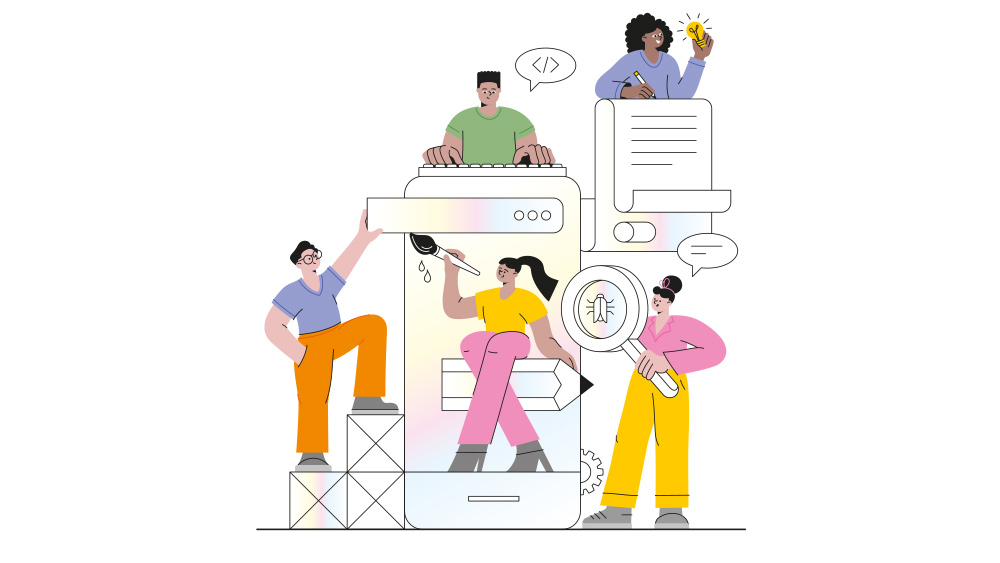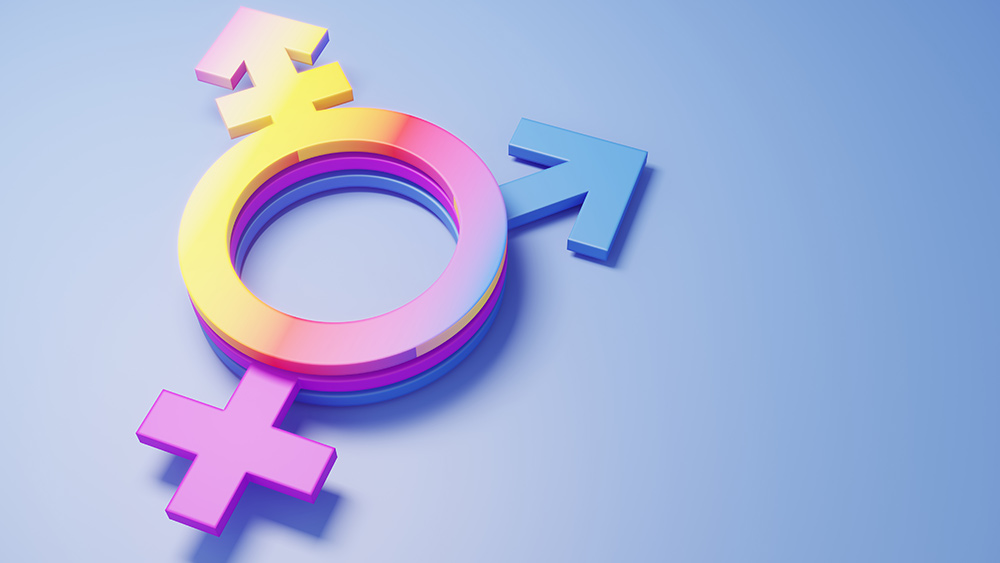
UX design is often confused with UI, and that can lead to a misconception that it's mainly bout aesthetics. But UX design is about people, and people are all different. There are many ways in which one person's experience of a product can be different from another's. And that means that UX designers need to consider diversity to provide a good experience for users.
Factors such as race, gender, sexual orientation and disabilities all need to be taken into consideration in UX design. Here experts in the field share their views and advice on improving diversity in UX. To learn more about UX and UI design, sign up for our online UX Design Foundations course. You'll learn from experts in the field, including some of those who contributed to this article.
01. Start with a diverse team

Content designer Jacquelyn Iyamah suggests It can help to have a diverse team on board. "If you have a diverse team of designers and I mean, diverse in every single sense of the word, there will be more advocates to be able to speak up to erasure when it comes to the products that you're designing," she says.
She adds: "When you think of AI and a lot of products that come out that are unable to detect dark skin, it tells you that throughout the design-thinking process, there was probably no UX researcher or no UX designer or no strategist who was a person of colour who thought, we should also be testing folks of colour to see how they would interact with this product."
02. Consider who you're designing for
It may sound obvious, but diversity in UX design means knowing who you're designing for. "There was a time where designers would be designing for a very specific set of elite audiences – that is not the case anymore," says Interaction designer and Parsons School of Design assistant professor Harpreet Sareen says. "We are designing for millions of people around the world."
Visual preferences and interpretations can vary depending on culture and geography – including interpretation of colour and shape. There are no specific correct answers except the fact that you have to get into the shoes of the users that you're designing for. Sareen offers a simple example of the direction of forward, which can vary in different parts of the world – pretty important for designing, say, a remote control.
"How you avoid people getting frustrated when they are using the system is an important consideration and probably the most important one for a designer," Sareen says. "If you are designing systems that take a lot of knowledge to use, you are leaving out billions of people. And that is why it is important to figure out who is using your product."
Get the Creative Bloq Newsletter
Daily design news, reviews, how-tos and more, as picked by the editors.
Designing with everyone in mind also means considering intersectional identities, including age, colour and gender.
03. Think about the imagery
When you're designing even a website, think about the imagery and branding," Iyamah says. "A lot of times, for communities of colour, we go on a website, and we don't see ourselves on that website at all. There's no one who thought, we should diversify our imagery so that people can see themselves in this product. And that's something that can also be alienating."
She recommends doing background research into historical context, institutional or interpersonal practices and policies that have impacted on particular communities by consulting journals. She also stressed the need to always question one's own biases.
"I remember in 2012, just not being able to use any emojis that were my skin tone," she says. "And that's something that was just the norm. A really big thing within the design field itself is something that I call the white default, which is essentially the norm viewed as white. And so you end up with these products like emojis, like Band-Aids, like self-driving cars, like soap dispensers, that they just don't speak to communities of colour."
04. Adjust your research strategy
Research is essential to get to know the user, but research approaches themselves can also change depending on who the user is. Luke Cooley, a human-centred researcher at Google says: "There's really no shortcut to really investing in your users and understanding who they are. Oftentimes, it means adjusting your research strategy."
He gives the example of a group of researchers researching in Africa. They wanted to investigate how people would spend $100 given different options but realised it wasn't a culturally sensitive exercise. "Because they were in a poorer community, that wasn't a culturally sensitive thing to do. So instead of using money, they used a variety of tokens and objects so that they could allocate to those different objects that they were previously referring." He recommends UX design students explore anthropology, sociology and economics from macro to micro to help inform their strategy as a researcher or designer.
05. Consider accessibility
Another aspect of designing for diversity in UX is accessibility. "We have accessibility codes for the disabled to go through our cities – ramps, walkways," Sareen says. "But we don't have that kind of accessible code in the digital world – it's not enforced. What that ends up doing is not including a large section of society."
Many designers point out that designing accessible interfaces often doesn't only make the experience better for people with a certain disability, but actually improve it for everyone. Vee Rogacheva, head of product design at Fure, advocates for bringing the engineering team on board in these decisions as soon as possible because they should have expertise and knowledge that can enrich prototypes and design solutions.
Cooley says "Oftentimes, that means considering things like, is there enough contrast between the text and its background? How large is the text that we're using itself? Are buttons clickable? How large are the buttons?"
He stresses that many of these questions can only be answered in the field. "We can read up on books of the needs of particular users, but we can't fully understand and capture all the needs, especially in terms of accessibility, unless we actually go out in the field and speak to those users ourselves," he says.
06. Look at every detail

Even something as simple as an icon can impact people in different ways. Icons can be used to simply communicate the notion of an idea, action or activity, but it can't get so abstract that people are trying to understand what it means, but how do you create an icon for blurred representation of gender in a way that feels right?
"These things can really impact and make people who don't identify with a single gender or who are gender neutral feel alienated," says John Bricker, founder Gensler’s Retail and Branding studios. His team has built up a huge library of icons to help inform their choices.

Learn more about the future of UX and UI on our 100% online UX Design Foundations course.
Read more:

Thank you for reading 5 articles this month* Join now for unlimited access
Enjoy your first month for just £1 / $1 / €1
*Read 5 free articles per month without a subscription

Join now for unlimited access
Try first month for just £1 / $1 / €1

Joe is a regular freelance journalist and editor at Creative Bloq. He writes news, features and buying guides and keeps track of the best equipment and software for creatives, from video editing programs to monitors and accessories. A veteran news writer and photographer, he now works as a project manager at the London and Buenos Aires-based design, production and branding agency Hermana Creatives. There he manages a team of designers, photographers and video editors who specialise in producing visual content and design assets for the hospitality sector. He also dances Argentine tango.
